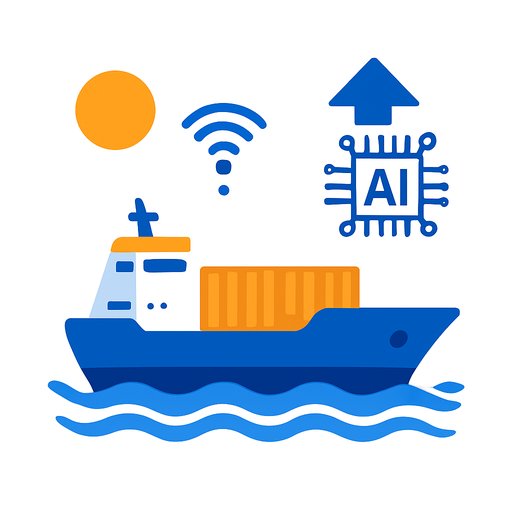South Korea fast-tracks AI autonomous ships: feasibility exemptions, Level 4 by 2032
South Korea has removed the pre-feasibility study requirement for AI-driven autonomous vessel projects. The goal: cut delays and get fully autonomous, Level 4 ships on the water by 2032.
The exemption clears early procedural bottlenecks so teams can build, test, and iterate sooner. For IT and development teams, this means faster pilots, more real-world data, and a bigger appetite for deployable systems.
What this exemption changes for builders and dev teams
- Shorter time-to-pilot: projects can launch without waiting for lengthy upfront assessments.
- Faster feedback loops: earlier sea trials = more edge cases captured for model training and validation.
- Clearer procurement paths: shipyards and operators can green-light trials with less red tape.
- More integration work: sensors, onboard compute, and bridge systems will need hardened interfaces and APIs.
Level 4 at sea: what it actually means
Level 4 autonomy is full autonomous sailing capability. The vessel can perceive, decide, and act across the full voyage profile, including dynamic collision avoidance and route optimization, with no crew intervention under defined operational conditions.
Practically, expect a stack that includes multi-sensor fusion (radar, AIS, EO/IR, LiDAR where viable), COLREGs-compliant decision models, predictive tracking, contingency handling, and closed-loop control. You'll also need edge-first computing, redundancy, cybersecurity-by-design, and auditable decision logs.
Policy and standards timeline
South Korea aims to lead before international rules are finalized. The International Maritime Organization is working toward standards for autonomous ships by 2032. South Korea's ministries have elevated autonomous shipping to a national strategic priority and produced a 2024 Shipbuilding Industry R&D Roadmap to guide industry and standards work.
Funding and national direction
In February, the Ministry of Trade, Industry and Energy earmarked about 260 billion won for shipbuilding technologies this year, with 20 billion won focused on autonomous vessel tech. The priority areas include unmanned navigation and AI control systems-core components for Level 4 capability.
Minister Kim Jung-kwan noted that South Korea's shipbuilding and AI strengths position the country to lead in autonomous vessels. The policy shift signals long-term commitment, not a short-term pilot spree.
Industry progress you should know
- Avikus (HD Hyundai Group) - HiNAS Control: Received DNV certification in September 2024, billed as the first certified autonomous vessel system, and now moving into actual vessel installs. Core features: autonomous collision avoidance and route optimization-targeting reduced navigator fatigue, fewer incidents, and lower emissions. See DNV's autonomous shipping resources.
- Samsung Heavy Industries - "Shift Auto" research vessel: Launched November 2024 with a catamaran hull to reduce roll. Its in-house system supports fully unmanned docking, sailing, and mooring.
- Mokpo National Maritime University - "Segae Ro": Completed a 2,800 km verification voyage to the Philippines (October 2024), advancing commercialization of Samsung Heavy's autonomous navigation system.
- Hanwha Ocean: Investing to reach Level 4 intelligent autonomous vessels by 2030.
Technical priorities for IT and development teams
- Sensor fusion and perception: Robust multi-modal fusion, adverse weather handling, AIS spoofing detection, and long-horizon vessel intent estimation.
- Decision systems: COLREGs-compliant planning under uncertainty, multi-agent interaction, explainability for bridge officers and auditors.
- Control and actuation: Fault-tolerant control loops, graceful degradation, health monitoring, and redundancy management.
- Simulation and digital twins: Scalable scenario generation for rare maritime events, domain randomization, and sim-to-sea validation pipelines.
- MLOps at sea: Onboard model management, bandwidth-aware data sync, event-driven logging, and verifiable OTA updates.
- Cybersecurity and safety cases: Threat modeling, secure boot, signed configs, and evidence packs for class/flag review.
- Interoperability: Clean interfaces with ECDIS, ARPA radar, AIS, and engine/steering controls; standards-aligned messaging and time sync.
How to engage now
- Propose pilot modules: perception-only pilots, decision support overlays, or autonomous docking assistants that can scale to full autonomy.
- Build data engines: automated event labeling from voyage logs, encounter clustering, and feedback loops from simulator-to-ship and back.
- Aim for certifiability: align architecture, logs, and safety artifacts with class expectations from day one to shorten approval cycles.
- Design for uptime: edge-first inference, power/compute failover, and offline-first operations with smart synchronization windows.
Why this matters
The policy shift compresses timelines from concept to sea trials. If you build autonomy, control, or maritime AI systems, South Korea is signaling budget, demand, and a path to scale-now, not years from now.
Where to skill up
If you want structured training across AI engineering, control systems, and deployment, explore relevant developer tracks here: Complete AI Training - Courses by Job.
Your membership also unlocks:






